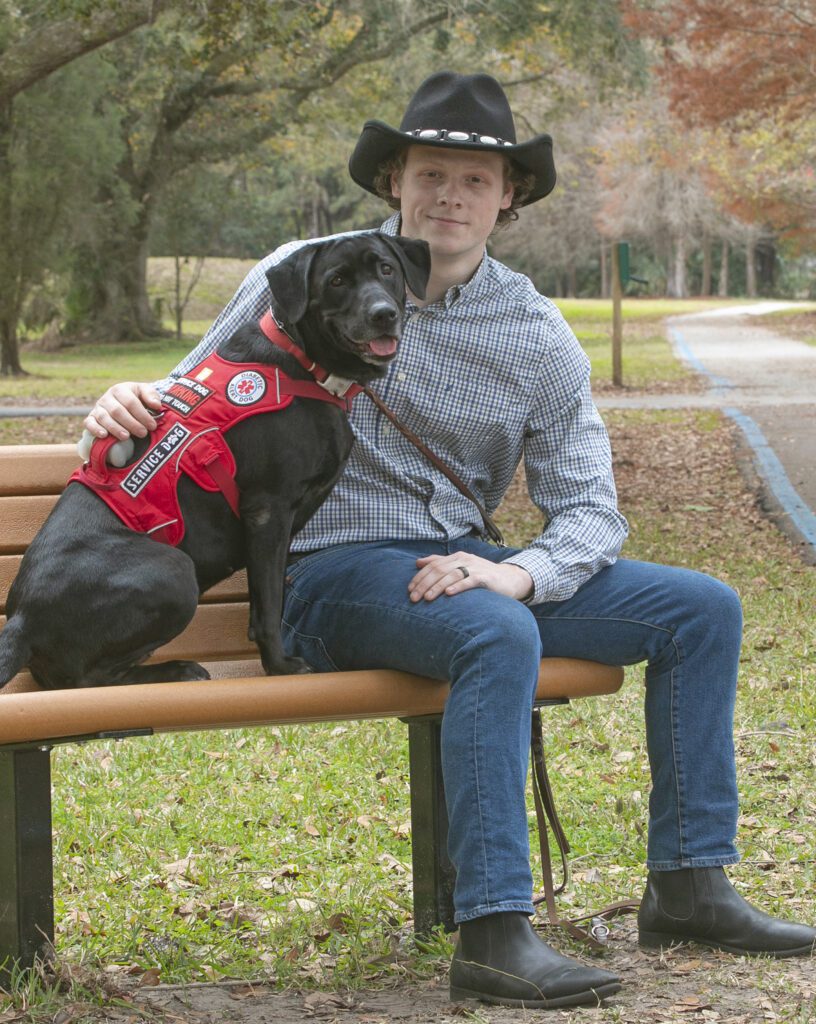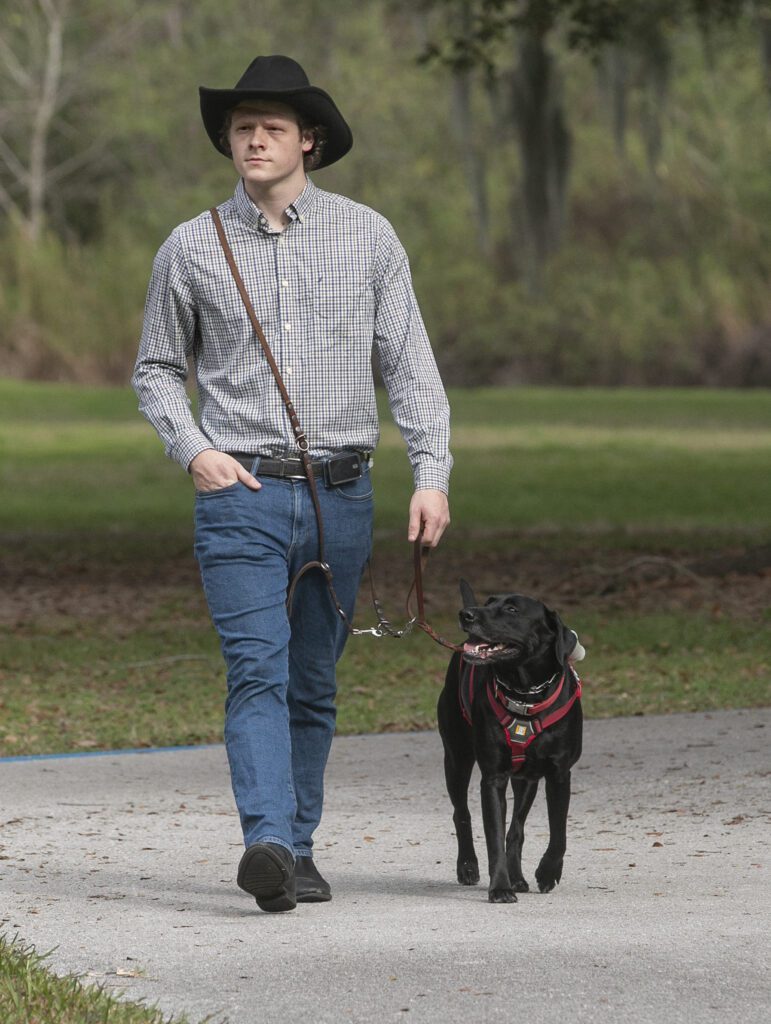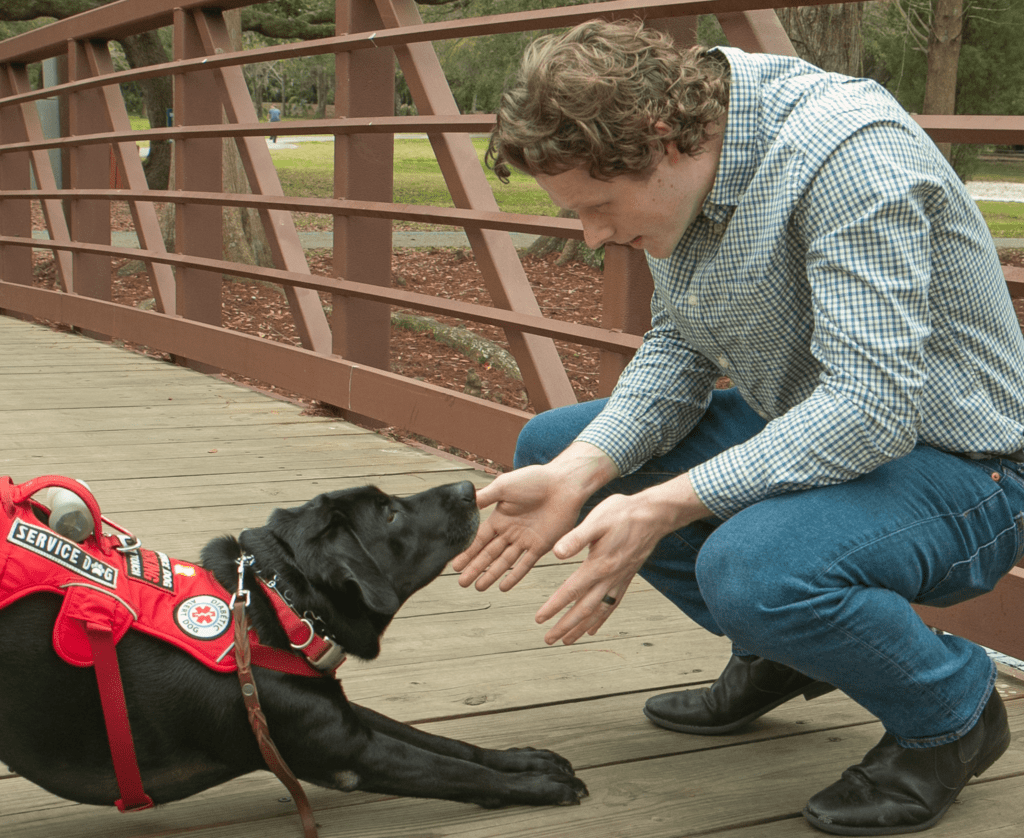Maguire Schmid Finds Perfect Partner in Diabetic Alert Dog
by TIM CRAIG
photos by MICHAEL WILSON
Maguire Schmid remembers his first encounter with a Diabetic Alert Dog.
It was about seven years ago at a festival. One of his friends who has type I diabetes had one.
“I had no idea they even existed until I met one,” says Schmid, who was diagnosed with type I diabetes at age 10 in 2010. “I didn’t know how they worked or anything.”
Yet, when Schmid walked into the booth where his friend and the alert dog were, the animal immediately went into alert mode.
“I felt fine,” the Lakeland resident says. “I didn’t have a continuous glucose monitor at the time, so I did a glucose test, and it said that my blood sugar was high.”
Schmid and his friend are two of the estimated 16 million Americans living with type 1 diabetes. According to the Juvenile Diabetes Research Foundation, about 64,000 people in the U.S. are diagnosed with type I diabetes each year.
When Schmid was first diagnosed at age 10, he and his family charged ahead, learning as much as they could about the disease and forming a family team called “Maguire’s Mission,” which hosted and participated in walks to raise money for the JRDF. When he was 15, he was chosen to go to Washington, D.C., to speak with lawmakers about type I diabetes and the importance of the availability of continuous glucose monitors.
“My parents were really instrumental in keeping me busy and moving forward,” he says. “They wouldn’t let me get down about having type 1 diabetes and were always looking ahead.”
After learning about the growing use of diabetic alert dogs are that trained to detect low or high blood sugar levels and prompt their owners to act, Schmid and his family chose to explore that option.
The Perfect Match
Their search took them to Tattle Tails Scent Dogs in Salt Lake City, Utah.
According to the Tattle Tails website, each of their puppies are scent imprinted, which means they are exposed to massive amounts of real-time diabetic scent from the time they are born. An “imprinted” puppy is a dog that comes from a line of service dogs and they are trained from the moment they’re born to recognize changes in blood sugar.
When a person’s blood sugar drops, dogs are able to detect it through breath and sweat. Dogs, which have 50 times as many scent receptors as humans, can smell
this change of chemical makeup.
Through a sponsorship with Bryce’s Buddies Juvenile Diabetes Foundation in Winter Haven, Schmid was able to get on the Tattle Tails waiting list, and just seven months later he was selected. As part of the pairing process, Tattle Tails owner K.C. Owens had a one-on-one chat with Schmid, like she does with all candidates.
“She really works to pair you based on your lifestyle and personality characteristics,” says Schmid. “At that time, I was an arrogant teen, so she knew I needed an alpha dog.”
During the pairing process, participants are placed in a Facebook group to ask questions and interact. Owens also hosts live-streamed sessions to allow the group to see the puppies grow. Owens does not disclose which puppy is matched with which family, but there was one dog that Schmid couldn’t help but notice.
“You definitely knew she was the alpha,” he says. “She had a purple collar on and always seemed like she was doing something extra — like climbing on top of the other puppies to be noticed or guarding the water and food bowls.”
When the puppies reached 8 weeks, it came time for the pairing ceremony with the other families. At the ceremony, the feisty, purple-collared black Lab, named Cadence, was given to Schmid.
Getting in Sync With Cadence
Coming home with Cadence in 2017 was just the beginning of the journey. Once the pair were matched, Schmid and Cadence needed to continue online training classes to complete the pairing process.
“She was definitely an alpha and was persistent as ever,” says Schmid.
At first, he says, to catch his attention, she would sit real still and stare intensely at him. “That was all she knew how to do,” he says. “We needed to work out how to communicate and understand each other.”
During their first year together, the pair worked out a system of signals. It all starts with the stare to get his attention, he says. Then he asks Cadence what’s wrong and she will respond with one of two signals. If his blood sugar is low, Cadence will raise her paw and make a swatting motion. If his blood sugar is high, she will make a bowing motion, with her front low to the ground and her backside high.
“It took a lot of work,” Schmid remembers, “but after about year, we had it worked out.”
It’s worked out so well, he says, that now Cadence almost always outperforms his CGM. “She consistently gives me alerts about my sugar levels before my monitor,” he says. “It almost makes the monitor secondary.”
Moving Forward
There have been quite a few changes since Cadence joined Schmid on his journey. He has grown from a high schooler to a 21-year-old with a full-time job and he recently got married, meaning Cadence needed to get used to sharing Schmid.
“At first, it didn’t go well,” he says. “She was not used to having an extra person around. As the alpha, it was an adjustment. But after about two months, she treats my wife as one of the family.”
Through it all, it’s impossible for Schmid to imagine life without his canine companion.
“Cadence has taught me a lot about myself and a lot about dogs,” he says. “Moving forward, it just keeps getting better. It’s awesome to have a companion that is always looking out for you.”


